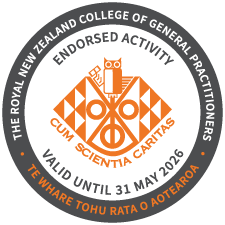This audit focuses on post-treatment planning for patients who have been diagnosed with lung cancer and completed
active treatment with curative intent. All patients who are post-treatment for lung cancer should have a post-treatment plan in place.
Transitioning from active treatment to post-treatment care is an important milestone in the long-term health of people
with lung cancer, and consistent follow-up and surveillance is necessary to ensure equitable outcomes for those who
have undergone curative-intent* treatment. However, there is variability in the provision of this care across the country,
with many potential contributing factors, including:
- Patient/whānau: co-morbidities, priorities and preferences, geographical and social isolation
- Clinical pathway: expected or unexpected health complications
- Cancer: histology, stage and prognosis, effectiveness of adjuvant and second-line interventions and surveillance
- Access: availability of resources or services
- Co-ordination: strength of links between tertiary, secondary and primary health services and community support services
* Curative-intent treatments in New Zealand include surgery, radical
radiotherapy (including stereotactic ablative radiotherapy) or chemoradiotherapy (not always given with curative intent)
While follow-up of people treated for lung cancer has
traditionally taken place in secondary care, in many instances
this can be provided in the community, e.g. by a general
practitioner or nurse practitioner, or via outpatient services
with a clinical nurse specialist. One of the benefits of
primary care-led follow-up is the provision of “survivorship”
care that encompasses the patient’s cancer-related care,
as well as management of co-morbidities and other health
and wellbeing needs, including lifestyle interventions (e.g.
smoking cessation, reducing alcohol intake, improved diet)
and psychological support. Potential issues with primary careled
follow-up include the time constraints on general practice
and additional cost to patients of primary care appointments,
which can be a significant factor. Telephone or virtual followup
with a practice nurse at reduced cost may help to mitigate
this.
For further information see “Lung cancer follow-up and surveillance: the role of primary care” available from
https://bpac.org.nz/2021/lung-cancer-surveillance.aspx
Important criteria for a post-treatment plan for patients affected by lung cancer
The main goals of post-treatment care are to:
- Prevent and detect recurrent or new cancers to enable timely and appropriate management
- Prevent, identify and manage medical and psychosocial late or chronic effects of cancer and cancer treatment
- Co-ordinate care between all providers to ensure the patient’s needs are met
- Help the patient to gain greater independence and selfmanagement
of their ongoing health and wellbeing
One approach for ensuring that patients are appropriately followed up is to establish a patient-specific post-treatment plan:
- The primary care provider and patient should have
access to a treatment summary – On completion
of cancer treatment, it is the treating specialist’s
responsibility to share a copy of the patient’s treatment
summary with their primary care provider (this should
be able to be accessed electronically via a shared record
storage system); a plain language summary should also
be provided to the patient and their family/whānau.
- All patients should have a chest X-ray three months
post-treatment – This is recommended by the National
Lung Cancer Working Group and the chest X-ray should
be reviewed by the treating specialist.
- Physical symptoms and overall health are assessed
and appropriate pharmacological inventions are
initiated if required – This includes regular review
of symptoms and signs that may indicate recurrence
and need for further investigation, and review and
management of any co-morbidities. Encourage
appropriate lifestyle interventions (e.g. smoking
cessation, reducing alcohol intake, improved diet) and
recommend vaccinations, including annual influenza
vaccination and COVID-19 vaccination.
- Psychological symptoms and cognitive changes are
considered – People who have undergone treatment
for cancer may experience psychological symptoms
such as fear of recurrence, insecurity about their
future, guilt or shame, distress, depression and anxiety.
Cognitive changes, including difficulty concentrating
and short-term memory loss can be associated with
chemotherapy.
In addition to these items which form this audit, whānau
should be involved in the post-treatment plan. Check
and document that the patient and their family/whānau
Clinical Audit | Post-treatment planning for patients affected by lung cancer | 3
understand the diagnosis and treatment, that prognosis that has been discussed and if any advance
care planning is in place. An ongoing follow-up plan should also be in place which should include
the providers involved, the frequency/ duration of follow-up (typically five years) and clear lines
of responsibility.
Summary
This audit focuses on whether a post-treatment plan was established for patients who have completed curative treatment for lung cancer.
Recommended audit standards
For the purposes of this audit, 100% of patients affected by lung cancer who have completed active treatment should have a post-treatment
plan documented in their notes. This may not be achieved on the first cycle of the audit but should be the aim for the second cycle.
Eligible people
Any patient who has been diagnosed with lung cancer and has transitioned from active treatment to post-treatment care is eligible for this audit.
Identifying patients
You will need to have a system in place that allows you to identify eligible patients who have been diagnosed and treated for lung cancer and audit their clinical notes.
Many practices will be able to identify patients by running a “query” through their PMS system, initially searching for all patients with lung cancer as a diagnosis.
The clinical notes will need to be checked to identify those patients who have completed treatment.
Sample size
For the purposes of this audit, all eligible patients should be included.
Criteria for a positive result
You will need to access and review your patients’ clinical notes to complete this audit. For a positive result, each patient’s notes should include documentation of:
- Receipt of a treatment summary
- A chest X-ray three months post-treatment or a scheduled appointment
- Physical symptoms and overall health are regularly assessed
- Psychological symptoms and cognitive changes have been considered
Any patient whose notes do not contain the information described above should be flagged for review. Aim for a higher number of positive results in Cycle 2.
Data analysis
Use the sheet provided to record your data. A positive result is any patient post-lung cancer treatment who has evidence
in their clinical notes of comprehensive treatment plan, as demonstrated by a “YES” in column E
(which encompasses the criteria detailed in columns A–D). The percentage achievement can be calculated
by dividing the number of patients with a positive result by the total number of patients audited.
The first step to improving medical practice is to identify the criteria where gaps exist between expected and actual performance and then to decide how to change practice.
Once a set of priorities for change have been decided on, an action plan should be developed to implement any changes.
Taking action
It may be useful to consider the following points when developing a plan for action (RNZCGP 2002).
Problem solving process
- What is the problem or underlying problem(s)?
- Change it to an aim
- What are the solutions or options?
- What are the barriers?
- How can you overcome them?
Overcoming barriers to promote change
- Identifying barriers can provide a basis for change
- What is achievable – find out what the external pressures on the practice are and discuss ways of wdealing with them
in the practice setting
- Identify the barriers
- Develop a priority list
- Choose one or two achievable goals
Effective interventions
- No single strategy or intervention is more effective than another, and sometimes a variety of methods are needed to
bring about lasting change
- Interventions should be directed at existing barriers or problems, knowledge, skills and attitudes, as well as performance
and behaviour
Monitoring change and progress
It is important to review the action plan developed previously at regular intervals. It may be helpful to review
the following questions:
- Is the process working?
- Are the goals for improvement being achieved?
- Are the goals still appropriate?
- Do you need to develop new tools to achieve the goals you have set?
Following the completion of the first cycle, it is recommended that practitioners complete the first part of the
CQI
activity summary sheet (Appendix 1).
Undertaking a second cycle
In addition to regular reviews of progress with the practice team, a second audit cycle should be completed in order to quantify progress on
closing the gaps in performance.
It is recommended that the second cycle be completed within 12 months of completing the first cycle. The second cycle
should begin at the data collection stage.
Following the completion of the second cycle it is recommended that practices complete the remainder of the
Audit of Medical Practice summary sheet.

Claiming credits for Te Whanake CPD programme requirements
Practice or clinical audits are useful tools for improving clinical practice and credits can be claimed towards the Patient Outcomes (Improving Patient Care and Health Outcomes) learning category of the Te Whanake CPD programme, on a two credit per learning hour basis. A minimum of 12 credits is required in the Patient Outcomes category over a triennium (three years).
Any data driven activity that assesses the outcomes and quality of general practice work can be used to gain credits in the Patient Outcomes learning category. Under the refreshed Te Whanake CPD programme, audits are not compulsory and the RNZCGP also no longer requires that clinical audits are approved prior to use. The college recommends the PDSA format for developing and checking the relevance of a clinical audit.
To claim points go to the RNZCGP website: www.rnzcgp.org.nz
If a clinical audit is completed as part of Te Whanake requirements, the RNZCGP continues to encourage that evidence of participation in the audit be attached to your recorded activity. Evidence can include:
- A summary of the data collected
- An Audit of Medical Practice (CQI) Activity summary sheet (Appendix 1 in this audit or available on the
RNZCGP website).
N.B. Audits can also be completed by other health professionals working in primary care (particularly prescribers), if relevant. Check with your accrediting authority as to documentation requirements.

